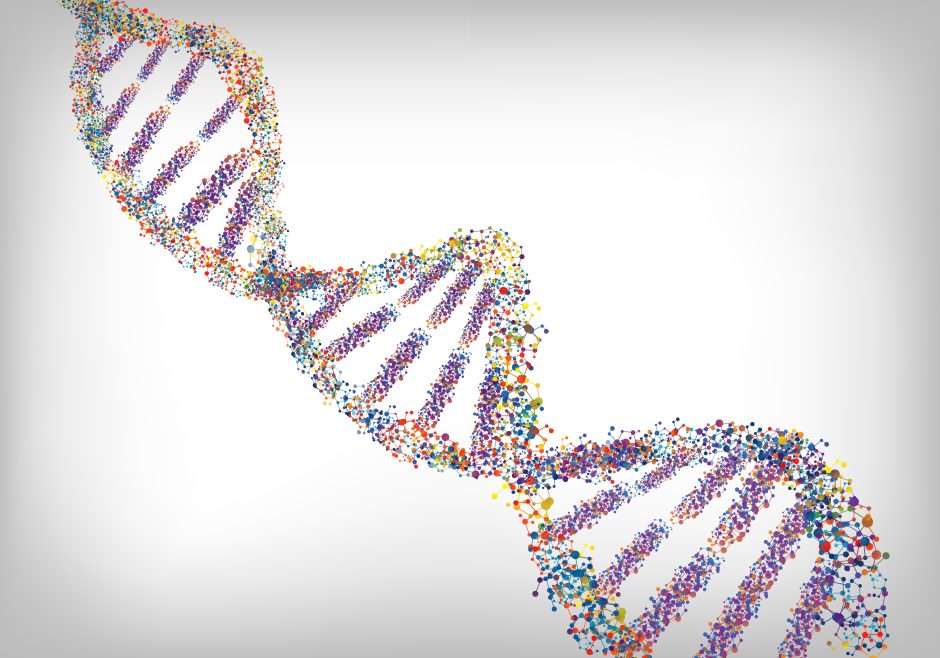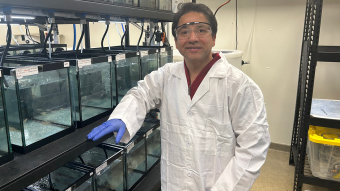

Aug. 8, 2023
Contact: Eric Stann, 573-882-3346, StannE@missouri.edu
For more than 20 years, Li-Qun “Andrew” Gu at the University of Missouri has developed a passion for solving life science problems by creating sophisticated diagnostic tools — in nanoscale.
Recently, Gu, a professor in the Chemical and Biomedical Engineering Department and investigator in the Dalton Cardiovascular Research Center, and a team of researchers developed a new method using nanopores — a nanometer-sized hole — to help scientists advance their discoveries in neuroscience and other medical applications. In context, the thickness of a single sheet of paper is about 100,000 nanometers.
“Potential applications include studying the structures of DNA- and RNA-based diseases and disorders, such as COVID-19, HIV and certain types of cancers, to see how drug therapies work. Or we could potentially discover new small-molecule drug compounds that can be used in future drug discoveries,” Gu said. “Also, the tool could help in the development of sensors for neurotransmitters for studies in neurochemistry and neurodegenerative disease diagnostics.”

The technique involves aptamers, or single strands of DNA or RNA molecules that selectively bind to a specific target. This allows researchers to know exactly what they are detecting with the nanopores and study how individual molecules are interacting with each other, said Kevin Gillis, a co-corresponding author on the study.
Gillis, who is a professor and chair of the Chemical and Biomedical Engineering Department and investigator in the Dalton Cardiovascular Research Center, said the interaction between single molecules is detected through tiny ion currents through a nanopore.
“Nanopores can detect single molecules because they are like a built-in amplifier — the binding of a single molecule can block the flow of millions of ions moving through the pore that produces the measured current and changes in the current represent the single molecules moving or binding inside nanopores,” he said.
Gillis is amazed by how innovative researchers like Gu are still finding new ways to harness nanopores to help them better understand small-molecule molecular interactions by using single-molecule precision.
“This approach contributes to a growing area of research called synthetic biology which is intended to reproduce the most important features in life by replicating the most basic biological functions in synthetic form,” Gillis said. “This makes it one of the most powerful approaches to understand the basic principles of life.”
“Real-time label-free detection of dynamic aptamer–small molecule interactions using a nanopore nucleic acid conformational sensor,” was published in the Proceedings of the National Academy of Sciences (PNAS). Co-authors include Rugare G. Chingarande, Kai Tian, Yu Kuang, Aby Sarangee, Chengrui Hou, Emily Ma, Jarett Ren, Sam Hawkins, Joshua Kim, Ray Adelstein and Sally Chen. This research was partially supported by National Science Foundation (NSF) Convergence Accelerator Track J (0072474) and NSF REU Site: Creative Approaches to Materials Design and Processing (1757936 and 2149721).
Gu would like to thank each of his co-authors for their individual contributions to the work and recognize the interdisciplinary nature of the team. These co-authors include a postdoctoral fellow, graduate students, visiting scientist, undergraduates from both MU and other universities, as well as students from local high schools. Gu said this shows the outcome and broad impact of education and training in both his and Gillis’ laboratories.



